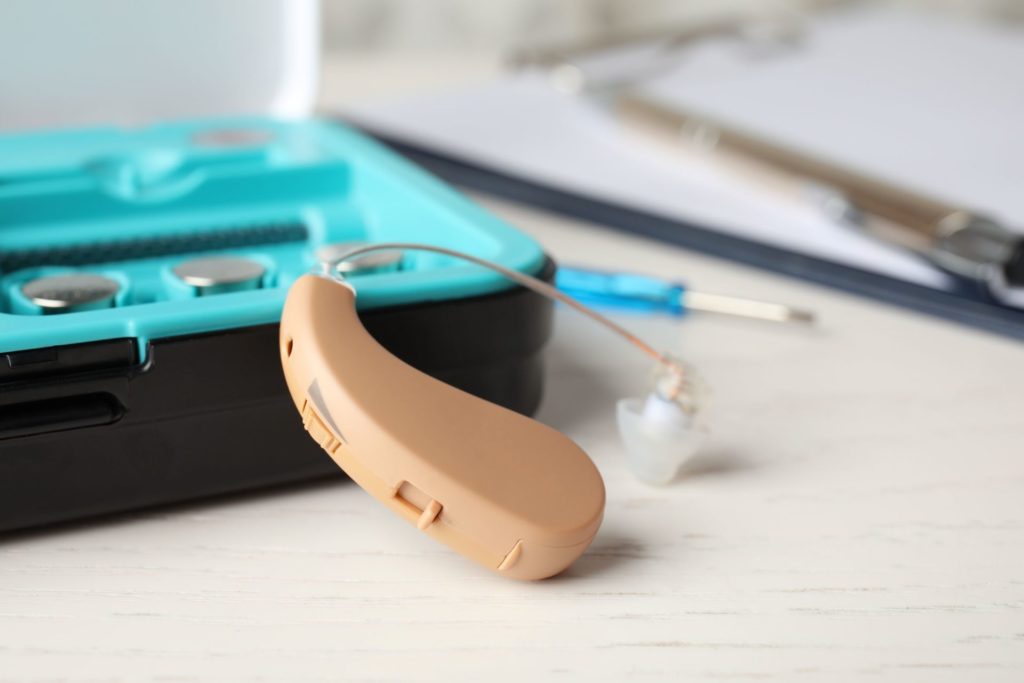Learning how to clean your hearing aids can greatly improve the reliability and sound quality of your hearing device. Regularly cleaning your hearing aids at home is a great way to take care of your device in between seeing your hearing care specialist and maintenance appointments.
Tools needed to clean hearing aids at home
To effectively and safely clean your hearing aids at home, you will need the appropriate tools. We recommend using a cleaning wire and a brush, both easily available on Amazon.
We also recommend you have a hearing aid air puffer, like this one. These lightweight tools are great for drying your hearing aids and dislodging debris.
Investing in a DryBoost UV is also greatly beneficial and works as a sanitiser, charger and dryer all in one handy piece of kit!
How to clean your hearing aids at home
How you clean your hearing aids at home will depend on the type of hearing aid you wear. Cleaning methods vary depending on whether you wear BTE (behind the ear) hearing aids or ITE (in the ear) hearing aids.
No matter which hearing aid you clean, be sure to hold them over a soft surface to avoid damage if dropped and always wash your hands before handling your hearing devices.

How to clean ITE (in the ear) hearing aids
When cleaning ITE hearing aids, it’s especially important to focus on the openings of the device including the microphone ports.
- Hold the hearing aid with the opening you are cleaning facing downwards and clear the device of built up wax using a soft bristle brush. Holding the device in this way will allow build up and debris to fall from the device.
- Using your cleaning wire or wax pick, remove debris from the opening that couldn’t have been removed using the brush.
- Wipe the device using a soft, clean, dry cloth to ensure debris has been thoroughly removed from the device.
How to clean BTE (behind the ear) hearing aids
When cleaning a BTE hearing aid, be aware of strong scents coming from the device. A slight odour is normal to occur over time however, a strong smell can indicate more serious issues such as an ear infection.
- Remove build up and debris from the hearing aid case using your soft bristle brush.
- Disconnect the ear mould and using a clean cloth, wipe clean. If you notice staining or a slight odour you can soak the mould overnight in soapy water. Should you soak your moulds, be sure to allow them to dry thoroughly overnight.
- You can soak the tubing overnight with the moulding should you wish. Using the hearing aid air puffer is recommended for drying the tubing.

Hearing aid care tips
Adopting good hearing aid care habits can help maintain your hearing aid devices for longer and ensures the sound quality of your hearing aids remains crystal clear.
Removing the batteries at night
Taking the batteries out of your hearing aids each night and keeping the battery compartment open allows any moisture to evaporate and gives you an opportunity to clean out the battery compartment with a soft brush.
Clean hearing aids daily
Getting into a habit of cleaning your hearing aids each night before bed means they’ll be easier to keep clean and remove build up of debris. Do not use alcohol or excess water when cleaning your hearing aids.
Avoid extreme temperatures
Wearing your hearing aids in excessive heat or excessive cold can lead to moisture damage over time. When carrying out activities in either hot or cold weather, do your best to leave your hearing aids indoors.
When to see a hearing care specialist
Having regular appointments with your hearing care specialist is important for the upkeep of your hearing aid device and ear health. If you have difficulty cleaning your hearing aid or notice parts are broken, loose or missing.
If you find you’re unable to thoroughly clean your hearing aids, get in touch with us and we can use our specialist tools to clean your hearing devices and show you how to maintain them at home.
